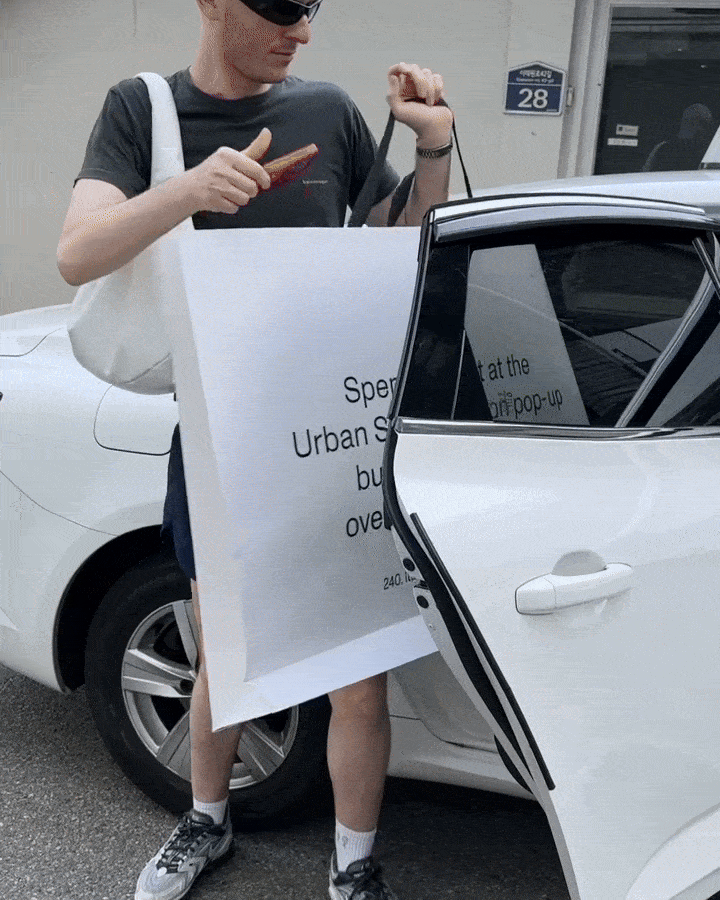The Psychology of the Giant Shopping Bag
How Brands Use Size and Social Signaling to Turn Customers into Marketers
What if your shopping bag was bigger than you are? It’s not a joke — it’s the latest stunt from brands like Ader Error, Musinsa Standard, and Urban Sophistication. They’re all using massive, eye-catching bags to turn customers into walking billboards.
The trend started with Korean streetwear brand Ader Error, known for its multi-sensory design language. Their oversized blue bags for the 24SS collection became fashion statements in themselves. Soon after, Musinsa Standard adopted the idea — giant white bags that dominated Seoul’s pop-up scene. And most recently, Urban Sophistication joined the fun, giving away colossal bags at their event with tongue-in-cheek text like:
“Spent my rent at the Urban Sophistication pop-up but at least I got this oversized bag to live in.”
These bags are more than packaging. They’re visual spectacle, cultural artifact, and marketing vehicle all at once — a low-cost, high-impact way to make people talk, post, and remember.
Why this strategy?
The Herd Effect & Social Signaling
The giant bag is a potent form of social signaling. Carrying one isn’t just about transporting goods — it’s about broadcasting participation in a trend or exclusive moment. This public act of consumption creates social proof, triggering curiosity and imitation among onlookers. It’s marketing through visibility and validation, not ads.The Endowment Effect & The Joy of Exclusivity
These bags are souvenirs of belonging. A regular bag says “I bought something.” A giant one says “I was there.” By making the bag itself limited and event-specific, brands tap into the endowment effect — people value what feels earned and rare. The result? Shopping transforms into status.The Von Restorff Effect — Making the Unforgettable
The sheer size of the bag makes it a cognitive anomaly. In the chaos of a city filled with logos, a bag too big for the body is impossible to ignore. It lodges itself in memory — the brand doesn’t need to shout because its silhouette already does.
My Comment
This isn’t just a marketing stunt — it’s a case study in human psychology. In a world of tiny screens and endless digital noise, these brands remind us that sometimes, the boldest strategy is to take up real, unapologetic space.
It makes me think that maybe the best advertising isn’t what we scroll past, but what we literally can’t walk past. It’s a quietly brilliant irony — in an age obsessed with going viral, the most effective visibility might just come from being physically impossible to ignore.








